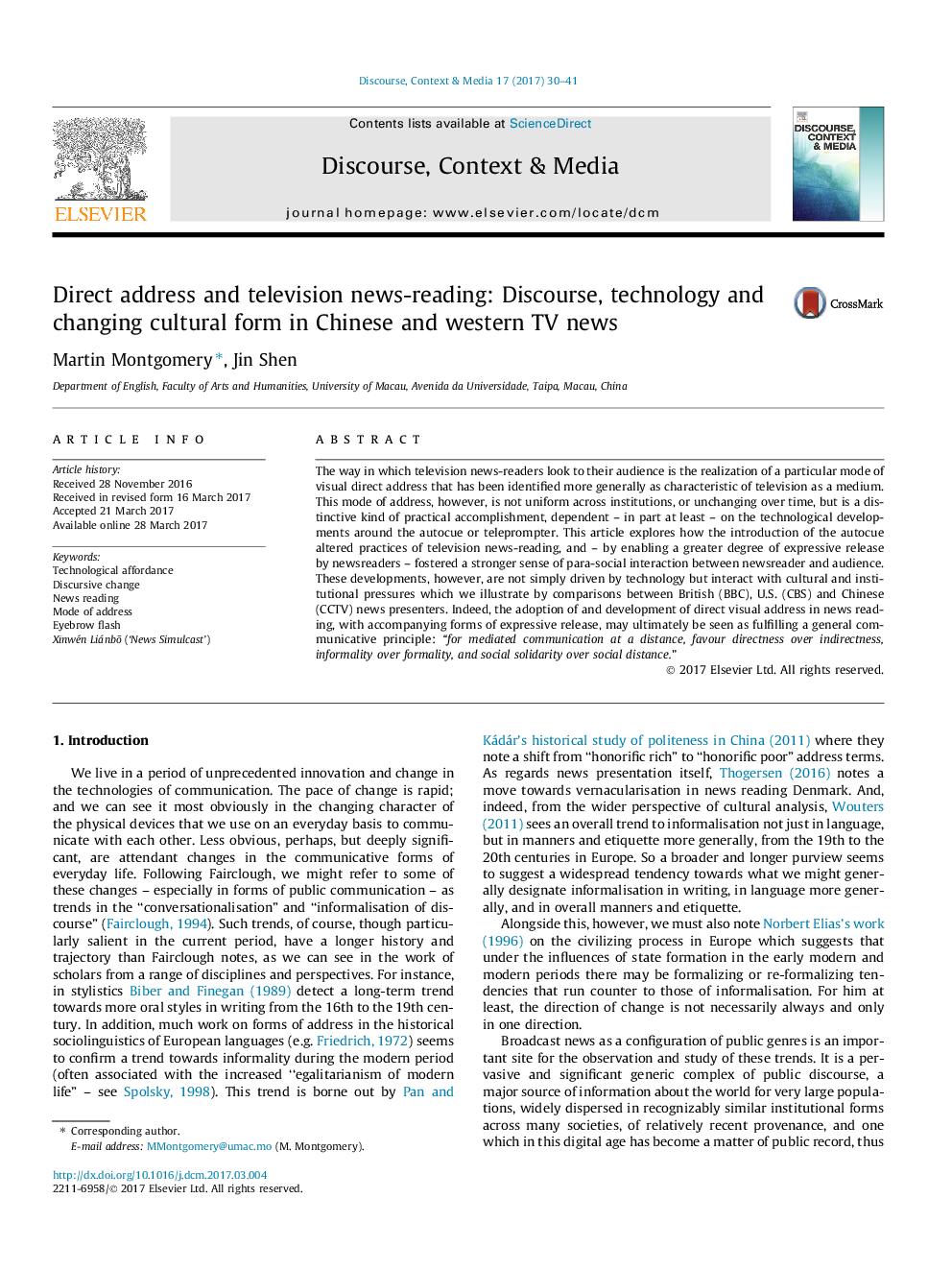| Article ID | Journal | Published Year | Pages | File Type |
|---|---|---|---|---|
| 5123979 | Discourse, Context & Media | 2017 | 12 Pages |
â¢Explores the properties of visual direct address as an integral dimension of television news-reading.â¢Shows how visual direct address was affected by technological innovation with the introduction of the teleprompter or autocue.â¢Suggests a likely direction of change towards more expressiveness in TV news-reading.â¢But shows through comparison between different national broadcasters how degrees of expressiveness may be affected by cultural factors.
The way in which television news-readers look to their audience is the realization of a particular mode of visual direct address that has been identified more generally as characteristic of television as a medium. This mode of address, however, is not uniform across institutions, or unchanging over time, but is a distinctive kind of practical accomplishment, dependent - in part at least - on the technological developments around the autocue or teleprompter. This article explores how the introduction of the autocue altered practices of television news-reading, and - by enabling a greater degree of expressive release by newsreaders - fostered a stronger sense of para-social interaction between newsreader and audience. These developments, however, are not simply driven by technology but interact with cultural and institutional pressures which we illustrate by comparisons between British (BBC), U.S. (CBS) and Chinese (CCTV) news presenters. Indeed, the adoption of and development of direct visual address in news reading, with accompanying forms of expressive release, may ultimately be seen as fulfilling a general communicative principle: “for mediated communication at a distance, favour directness over indirectness, informality over formality, and social solidarity over social distance.”
